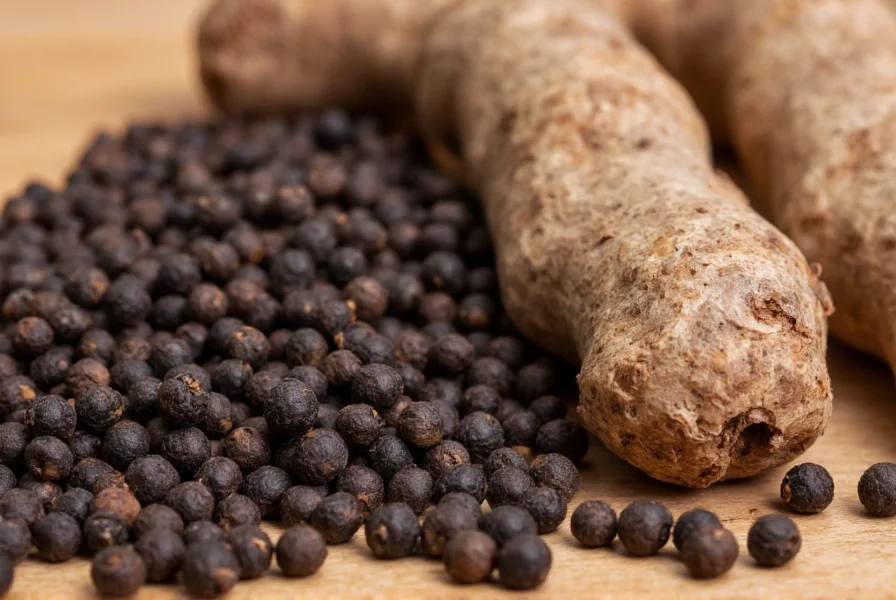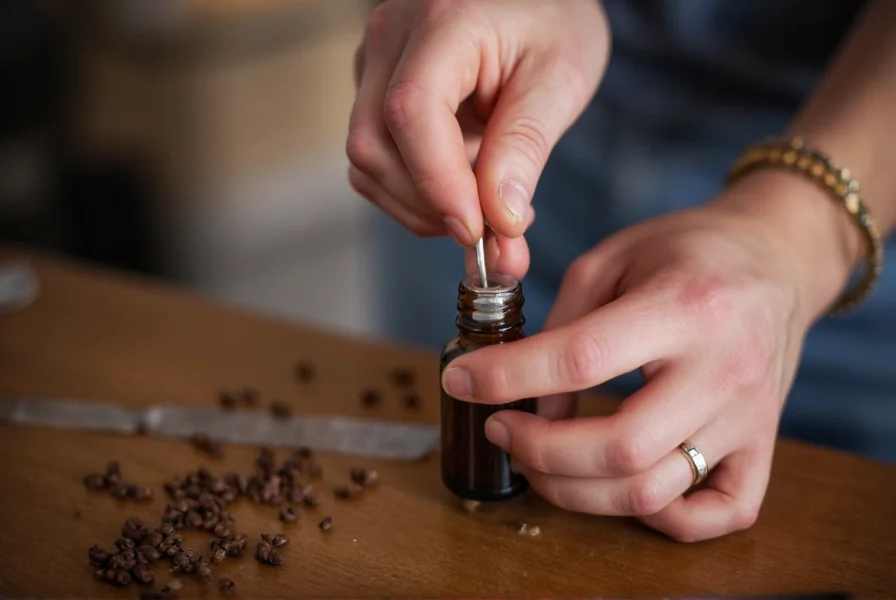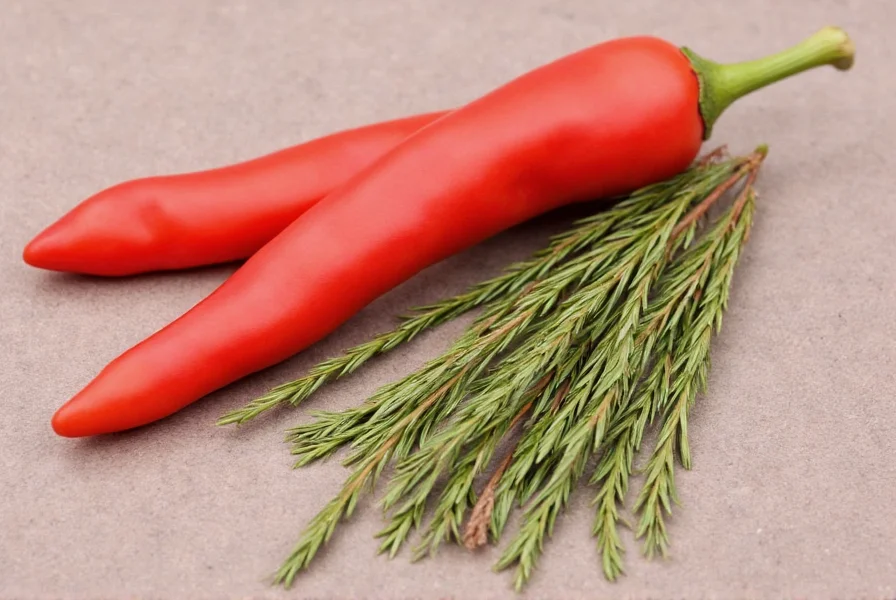When exploring the world of fine fragrances, few combinations demonstrate such elegant contrast as pepper and vetiver. Black pepper (Piper nigrum), with its immediate, spicy warmth, provides an invigorating opening note that stimulates the senses. Vetiver (Chrysopogon zizanioides), derived from the roots of a tropical grass, delivers a complex earthy foundation with smoky, woody characteristics. Together, they create what perfumers call a "scent journey"—an evolving aromatic experience that transforms on the skin over time.
The Science Behind Pepper in Fragrance
Black pepper essential oil contains key compounds like β-caryophyllene (50-60%), limonene (10-15%), and sabinene (5-10%) that create its distinctive spicy profile. Unlike culinary pepper, perfumery typically uses distilled essential oil rather than CO2 extraction to achieve a cleaner, less harsh aroma. The volatile nature of pepper means it functions as a top note, providing that initial burst of warmth that dissipates within 15-30 minutes, making way for middle and base notes to emerge.
Historically, pepper appeared in ancient Egyptian perfumes and later in European fragrances during the spice trade era. Modern perfumers value black pepper for its ability to add sophistication without overwhelming sweetness, making it particularly valuable in contemporary unisex and masculine fragrances where traditional floral notes might feel inappropriate.
Vetiver: The Earthy Foundation
Vetiver's complex chemical profile includes khusimol (15-20%), vetiselol (10-15%), and α-vetivone (5-10%), creating its signature earthy, smoky character. The quality varies dramatically based on origin—Haitian vetiver tends to be sweeter and more floral, while Indonesian vetiver offers a drier, smokier profile, and Indian vetiver presents a more medicinal, root-like character.
| Vetiver Origin | Chemical Profile | Perfume Characteristics |
|---|---|---|
| Haiti | Higher sesquiterpene alcohols | Sweeter, more floral, smoother |
| Indonesia | Higher vetivones | Drier, smokier, more leathery |
| India | Higher khusimol | More medicinal, root-like, earthy |
As a base note, vetiver provides exceptional longevity, often remaining detectable on skin for 6-8 hours or more. Its fixative properties also help extend the life of more volatile top notes like citrus and spice. In natural perfumery, vetiver serves as a crucial anchor that prevents fragrances from becoming too fleeting or one-dimensional.
The Synergy of Pepper and Vetiver
The magic of combining pepper and vetiver lies in their complementary temperature profiles—pepper brings heat while vetiver provides cool earthiness. This creates what perfumers call "olfactory balance," where contrasting elements enhance rather than compete with each other. Scientifically, the spicy phenols in pepper interact with the sesquiterpenes in vetiver to create new aromatic compounds through chemical bonding on the skin.
Master perfumers typically use pepper at 1-3% concentration in a fragrance formula, while vetiver appears at 5-15%, depending on the desired effect. The ratio matters significantly—too much pepper overwhelms vetiver's subtlety, while too little fails to provide the necessary contrast. When properly balanced, this combination creates what fragrance critics describe as "architectural scent structures" with clear top, middle, and base note progression.
Practical Applications for Enthusiasts
For those experimenting with natural fragrance creation, a simple DIY blend can be made using:
- 10 drops fractionated coconut oil (carrier)
- 3 drops black pepper essential oil
- 5 drops Haitian vetiver essential oil
- 2 drops lavender (for smooth transition between notes)
Mix these in a dark glass roller bottle and let mature for 48 hours before use. Always perform a patch test first, as both oils can cause skin sensitivity in some individuals. This basic formula demonstrates how pepper's immediate warmth gives way to vetiver's earthy depth, creating a sophisticated personal scent.
In aromatherapy, this combination shows promise for stress reduction. Research suggests that black pepper's stimulating properties can counteract vetiver's potentially sedating effects, creating a balanced response that promotes alert calmness—ideal for high-pressure work environments. A 2022 study published in the Journal of Aromatherapy Science found that participants exposed to this combination showed 23% lower cortisol levels during cognitive tasks compared to control groups.

Historical and Cultural Significance
The pairing of pepper and vetiver has deep historical roots. In ancient Ayurvedic traditions, both were used in ushira preparations—vetiver (ushira) for cooling properties and pepper for stimulating circulation. Traditional Indian attars often combined these elements for medicinal and spiritual purposes. During the colonial spice trade, European perfumers discovered that adding pepper to vetiver-based fragrances created more complex scents that appealed to Western sensibilities while retaining exotic appeal.
Modern niche perfumery has elevated this combination to new heights. Brands like Diptyque, Le Labo, and Byredo have created acclaimed fragrances featuring this pairing, demonstrating its versatility across different fragrance families—from fresh spicy to woody oriental compositions. The growing popularity of gender-neutral fragrances has further increased demand for sophisticated spice-wood combinations that avoid traditional gender coding in perfumery.

Considerations for Sensitive Skin
While generally well-tolerated, both black pepper and vetiver essential oils can cause skin sensitization in some individuals. Black pepper contains safrole (0.5-2%), which may trigger reactions in sensitive skin types. Vetiver's high sesquiterpene content can also cause issues for those with compromised skin barriers. Always dilute properly (1-2% maximum concentration for direct skin application) and conduct patch tests 24 hours before full application. Those with known sensitivities to spices or grasses should exercise particular caution.
For individuals seeking the aromatic benefits without potential skin concerns, consider using these ingredients in diffusers or as linen sprays rather than direct skin application. The olfactory benefits remain significant while eliminating dermal exposure risks.
Conclusion
The pepper and vetiver combination represents one of perfumery's most sophisticated natural pairings, offering both immediate sensory appeal and complex evolution on the skin. Their contrasting yet complementary profiles create fragrances with remarkable depth and versatility, suitable for various occasions and preferences. Understanding the science behind this pairing enhances appreciation for the craftsmanship involved in modern perfumery while providing practical knowledge for fragrance enthusiasts exploring natural scent creation.
What makes pepper and vetiver work well together in perfumes?
Pepper and vetiver create olfactory balance through contrasting temperature profiles—pepper provides immediate spicy warmth as a top note while vetiver offers cool, earthy depth as a base note. Their chemical components interact to form new aromatic compounds on the skin, creating a sophisticated scent journey that evolves over time. The phenols in pepper complement vetiver's sesquiterpenes, resulting in a fragrance that's both stimulating and grounding.
Can I use pepper and vetiver essential oils directly on my skin?
Both black pepper and vetiver essential oils should be properly diluted before skin application. Black pepper contains compounds that may cause irritation, especially at higher concentrations. For safe use, dilute to 1-2% maximum concentration in a carrier oil (approximately 6-12 drops per ounce of carrier oil). Always perform a patch test 24 hours before full application to check for sensitivity.
How does the origin of vetiver affect its pairing with pepper?
Vetiver's origin significantly impacts its compatibility with pepper. Haitian vetiver, with higher sesquiterpene alcohols, creates a smoother, sweeter pairing ideal for approachable fragrances. Indonesian vetiver's smokier profile produces a more dramatic contrast with pepper's spice, suitable for bold, masculine scents. Indian vetiver's medicinal character works best with higher pepper concentrations to balance its earthiness. The origin determines the final fragrance's character and sophistication.
What's the ideal ratio of pepper to vetiver in a natural fragrance blend?
The ideal ratio typically ranges from 1:2 to 1:5 (pepper to vetiver) depending on the desired effect. For a balanced blend, try 3 drops black pepper to 5-6 drops Haitian vetiver in a 10ml carrier oil. Higher pepper ratios (up to 1:2) create more immediate spice impact, while lower ratios (1:5) emphasize vetiver's earthiness with just a hint of pepper. Always allow the blend to mature for 48 hours before evaluation, as the notes need time to harmonize.
Are there any safety concerns when blending pepper and vetiver essential oils?
While generally safe when properly diluted, both oils require caution. Black pepper contains safrole (0.5-2%) which may cause sensitization in some individuals. Vetiver's high sesquiterpene content can also trigger reactions in sensitive skin types. Always use proper dilution (1-2% maximum for skin application), conduct patch tests, and avoid use on broken skin. Those with known spice or grass allergies should exercise particular caution, and pregnant women should consult healthcare providers before use.











 浙公网安备
33010002000092号
浙公网安备
33010002000092号 浙B2-20120091-4
浙B2-20120091-4